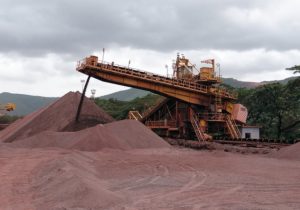Article Revised July 29th, 2022

Raw materials pricing has continued to fluctuate over the past two decades, remaining more volatile than most manufacturers would like. Dealing with issues associated with the cost volatility of raw materials is one of the largest challenges we face as metal fabricators, but by staying on top of the trends and by planning ahead, we can reduce its impact on not just our business but our customers’ businesses as well.
The Effect of Emerging Markets on the Price of Raw Materials
One of the most important factors in the fluctuation of raw materials pricing is emerging markets. In 2021, increasing demand for steel in emerging markets like China and India drove the price of iron ore up to $164.77 U.S. dollars per dry metric ton unit (DMTU), an almost 2x increase vs the previous year, and up from just $13 in 2001. According to The Economist, the cost of all non-oil commodities has tripled in the last decade, and China alone uses between a third and half of the world’s annual production of iron ore, aluminum, lead, and other non-precious metals, even though they only account for one-eighth of global output. These numbers don’t appear to be ready to level off anytime soon, so raw materials pricing will continue to be something metal fabricators will have to grapple with.
This rise of emerging markets has resulted in massive competition for the raw materials First World countries have come to rely on over the last 100 years when they were relatively inexpensive. This sudden shift in supply and demand — the increased demand driving up prices of available supply — has meant that manufacturers have needed to become more adept at mitigating the financial risks associated with raw materials pricing in terms of their volatility.
Looking for precision sheet metal fabrication and machining services?

What strategies can help lessen the risks posed by raw materials pricing volatility?
Do the math: Understand the percentage of raw materials used in all purchased products and input this information into a database for analysis.
Use what you’ve got: Track price changes as part of a raw materials informational database in order to predict where pricing is likely to go next.
Be clear upfront: When dealing with suppliers, it’s important to establish terms from the very start that detail both parties’ expectations in terms of material costs, and allow for regular review of pricing to account for potential future price volatility.
Know what you’re getting: Don’t assume there is a fixed raw material percentage for all products across the board. The percentage of raw material used is the primary determining factor of cost, and the only way to know if the pricing offered makes sense is to have a precise understanding of this basic, but often overlooked, factor.
Plan for the future: Whenever possible, entering vendor agreements that make it possible to lock in pricing can be enormously helpful. This generally requires long-term customer commitments in the form of blanket orders.
Consider the big picture: Using vendors that are able to supply multiple locations can help leverage overall volume.
With raw materials accounting for as much as 14-20% percent of overall costs, having a plan in place to help reduce the impact of their pricing volatility just makes good business sense. At EVS, we make sure to stay up to date with the latest trends and plan ahead, not just to protect us from financial losses, but also to be able to keep our clients informed well in advance of any major changes we may need to make to our own product and service pricing. In this way, we protect both our own business and our customers’ businesses as well.
Find out how EVS Metal can add value to your business by requesting a personalized quote online, or by calling (973) 839-4432.





